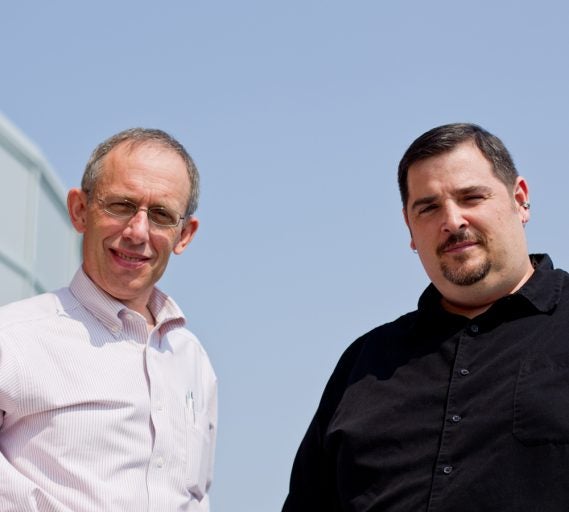NASA has just selected a University of Central Florida space project as a finalist for its Explorer Mission of Opportunity program.
The selection fulfills the dream of two UCF scientists who have been researching solar weather – and its affects on our terrestrial technology – for more than five years.
If chosen, this project would be the first time UCF would lead a NASA science mission.
“There were some excited shouts from the team members this morning when I shared the news,” said Richard Eastes, the project’s lead scientist and an assistant professor. “I’m not used to hearing shouts from scientists. This is very rewarding. It’s confirmation that some of the best scientists in the world think that our mission is at the forefront of science in the field.”
Eastes, along with his colleague Andrey Krywonos, have designed a specialized instrument that would help predict and prevent GPS and cell phone blackouts related to solar weather.
Today’s announcement means that UCF’s team was one of five selected from 20 proposals to receive $250,000 toward its work. The team would then present its concept study to NASA, vying for $55 million to develop a launch-ready project by 2016.
NASA is interested in the project because the data collected would be first of its kind, and it would help explain how earth’s space environment responds to the sun’s activities, such as solar flares.
Solar flares change the composition and temperature of the atmosphere around the earth and can damage military and commercial satellites, including those that help deliver television or cell phone signals.
And because the Federal Aviation Administration is moving toward monitoring air traffic through sophisticated GPS systems, accurate forecasts of space weather will be critical to prevent blackouts that could lead to aviation accidents.
“Space weather can be very dramatic,” Eastes said. “We just don’t hear a lot about it because, frankly, it’s in space. But it does have an impact on earth.”
The UCF team’s specially designed imager, the Global-Scale Observations of the Limb and Disk — or GOLD for short — will record images of ultraviolet light emitted by the atmosphere about 62 miles above the earth’s surface.
Measurements will be made from a satellite orbiting in sync with Earth, meaning data can be continuously collected across the same, complete hemisphere throughout the day.The data will give scientists a clear picture of how the temperature and composition in the uppermost portions of the atmosphere respond to various influences, such as changes in the sun’s behavior.
Eastes and Krywonos, who conduct research at UCF’s Florida Space Institute at Kennedy Space Center, have been working on the project since 2005.
NASA’s Explorers program aims to provide frequent flight opportunities for scientific investigations from space.
These investigations have led to important information in the past, including knowledge about Earth’s magnetosphere and the shape of its gravity field; the solar wind; and properties of micrometeoroids raining down on Earth, among other discoveries.
More about NASA’s program is available at https://explorers.gsfc.nasa.gov/history.html.
Eastes joined UCF in 2001. He has master’s and doctoral degrees in Physics from Johns Hopkins University, home of the Space Telescope Science Institute. Before coming to UCF, Eastes worked at the Air Force Research Laboratory.
Krywonos received his Ph.D. in Optics from UCF in 2006. He joined the Florida Space Institute that year as a post-doctoral researcher, and he is currently a research scientist at the Florida Space Institute.
